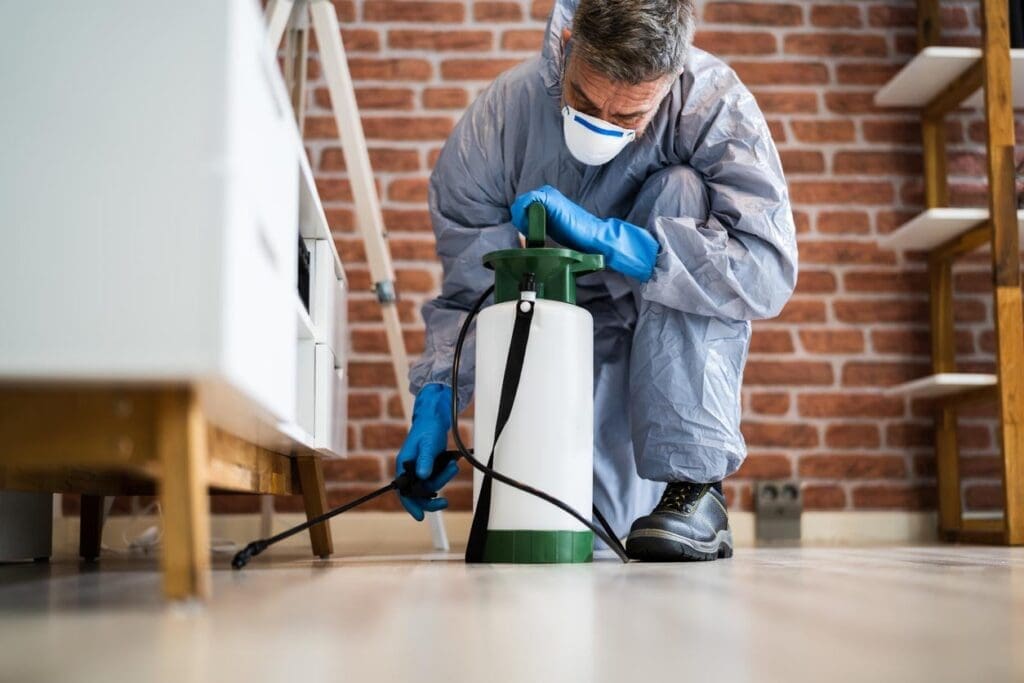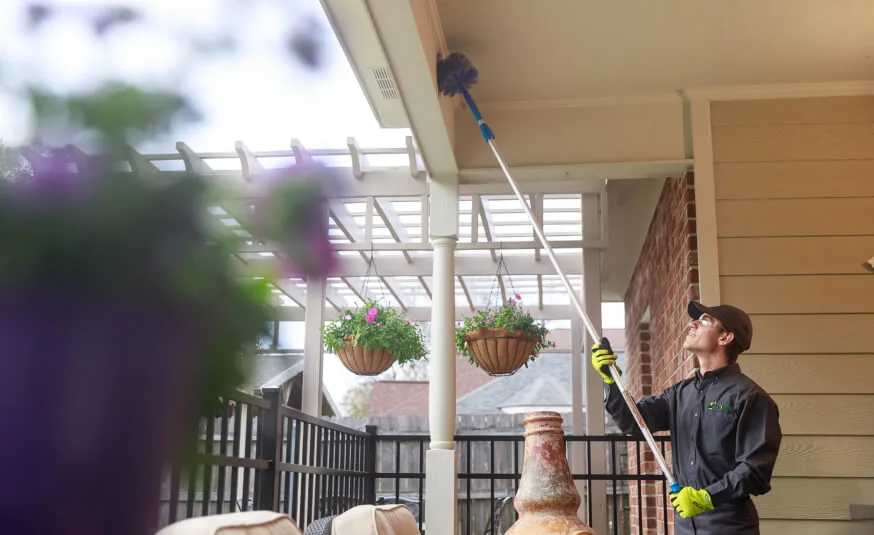In the sunny state of Florida, pest control poses some unique challenges. From the sweltering heat and humidity that attracts a wide range of unwanted visitors, to the diverse ecosystem that fosters insect breeding grounds, Florida homeowners face constant battles against pests. But fear not! In this informative article, we will explore the unique challenges faced in pest control in Florida and provide you with effective solutions to keep your home pest-free. So sit back, grab a cool drink, and let’s dive into the world of pest control in Florida!
Pest Control in Florida: Unique Challenges and Solutions

Introduction to Pest Control in Florida
If you’ve ever lived in or visited Florida, you know that the Sunshine State is not only known for its beautiful beaches, but also for its unique challenges when it comes to pest control. With its warm climate, high humidity, and abundance of water sources, Florida provides the perfect environment for pests to thrive. However, with the right knowledge and techniques, these pesky creatures can be effectively controlled. In this article, we will explore the unique challenges of pest control in Florida and provide solutions to help you protect your home and property.

Understanding the Unique Challenges
1. Climate and Environment
Florida’s climate and environment are major factors that contribute to the challenges of pest control in the state. The combination of high humidity and warm temperatures creates the perfect breeding ground for pests to reproduce rapidly. Additionally, the abundance of water sources, such as lakes, rivers, and swamps, provides ample breeding sites for mosquitoes and other water-dependent pests.
1.1. High Humidity
One of the unique challenges of pest control in Florida is the high humidity throughout the year. High humidity levels not only create a comfortable environment for pests but also promote the growth of mold and mildew, which can attract insects and rodents. Controlling humidity levels in your home through proper ventilation and dehumidification can help minimize pest infestations.
1.2. Warm Temperatures
Florida’s warm temperatures are also a contributing factor to the pest problems in the state. Many pests, such as mosquitoes, termites, and roaches, thrive in warm environments. The longer warm seasons in Florida provide extended periods for pests to breed and infest homes and buildings. Regular inspections and ongoing pest control measures are crucial to prevent these pests from invading your property.
1.3. Abundance of Water Sources
Florida’s numerous water sources, including ponds, lakes, canals, and ditches, create ideal breeding grounds for mosquitoes. These pesky insects not only cause discomfort with their bites but also pose a health risk as they can transmit diseases such as West Nile virus and Zika virus. Removing any standing water around your property and utilizing mosquito control measures can help reduce the mosquito population.
2. Native and Invasive Species
Another unique challenge in Florida is the presence of both native and invasive pest species. Native pests have existed in the state for a long time, while invasive pests have been introduced and pose a threat to the local ecosystems. Understanding the characteristics and behaviors of these pests is crucial for effective pest control.
2.1. Native Pests
Florida is home to a variety of native pests, including ants, mosquitoes, termites, roaches, and bed bugs. These pests have adapted to the local environment over time, making them more resilient and challenging to control. Implementing pest control measures that target specific native pests can help minimize their impact on your property.
2.2. Invasive Pests
Invasive pests, such as the Formosan subterranean termite and the giant African land snail, have been introduced to Florida and pose a significant threat to the state’s ecosystems and agriculture. These pests often have no natural predators, allowing them to reproduce and spread rapidly. Early detection and swift action are crucial to prevent the establishment and spread of invasive pests.
3. Structural Vulnerabilities
The unique architectural styles found in Florida, including older buildings and historic preservation sites, can present challenges in pest control. Many older buildings have structural vulnerabilities, such as gaps, cracks, and wood decay, which can provide entry points for pests. Coastal exposure is another factor that can lead to increased pest activity, as saltwater and humidity can deteriorate building materials, making them more susceptible to pest infestations.
3.1. Older Buildings and Historic Preservation
Preserving the architectural heritage of older buildings and historic sites is important, but it also requires special considerations for pest control. Regular inspections and maintenance, including sealing cracks and gaps, repairing damaged wood, and implementing preventative treatments, can help protect these structures from pest damage.
3.2. Coastal Exposure
Florida’s coastal areas are particularly vulnerable to pest infestations due to the exposure to saltwater and high humidity. Coastal properties may experience increased pest activity, especially from wood-destroying organisms like termites. Conducting regular inspections, using moisture barriers, and implementing preventative treatments can help mitigate the risks associated with coastal exposure.
4. Common Pest Problems in Florida
Florida is known for being home to a variety of pests. Understanding the common pests that you may encounter will help you choose appropriate pest control solutions:
4.1. Mosquitoes
Mosquitoes are perhaps one of the most common and troublesome pests in Florida. The warm and humid climate provides the perfect breeding grounds for these blood-sucking insects. Mosquito bites can not only be itchy and irritating but also transmit diseases. Implementing mosquito control measures, such as source reduction, larviciding, and adulticiding, can help reduce the mosquito population around your home.
4.2. Termites
Termites are a major concern for property owners in Florida. The warm and humid climate creates favorable conditions for these wood-destroying insects to thrive. Termite infestations can cause extensive damage to homes and buildings if left untreated. Common termite control methods in Florida include soil treatments, bait systems, and fumigation.
4.3. Ants
Ants are another common pest problem in Florida, with several species, such as carpenter ants and fire ants, causing trouble for homeowners. Carpenter ants can damage wooden structures, while fire ants can deliver painful stings. Effective ant control methods include baiting, barrier treatments, and the use of liquid insecticides.
4.4. Roaches
Roaches are a persistent problem in Florida, with several species, such as German cockroaches and American cockroaches, infesting homes and buildings. Roaches are not only unsightly but also carry and spread diseases. Insecticidal dust, gel baits, and crack and crevice treatments are commonly used to control roach infestations.
4.5. Bed Bugs
Bed bugs have become a growing concern in recent years, not only in Florida but across the country. These tiny insects feed on blood and can infest mattresses, furniture, and other areas where people rest. Heat treatments, insecticide treatments, and the use of encasements and mattress covers are effective methods for bed bug control.
5. Eco-Friendly Pest Control Solutions
Many homeowners in Florida are increasingly seeking eco-friendly pest control solutions to minimize their impact on the environment. Here are some environmentally-friendly approaches to pest control:
5.1. Integrated Pest Management (IPM)
Integrated Pest Management (IPM) is a holistic approach to pest control that focuses on prevention and reducing reliance on pesticides. IPM combines various strategies, such as proper sanitation, exclusion techniques, and biological controls, to manage pest populations effectively.
5.2. Biological Pest Control
Biological pest control involves using natural enemies, such as predators, parasites, and pathogens, to control pest populations. This approach is most commonly used for agricultural pests but can also be effective in controlling pests in residential settings.
5.3. Organic Pest Control
Organic pest control relies on naturally derived products, such as botanical oils and plant extracts, to repel or eliminate pests. These products are typically less harmful to the environment and can be used in residential settings with minimal impact on human health.
6. Chemical Pest Control Solutions
While eco-friendly pest control methods are preferred, there are situations where chemical pest control solutions may be necessary. Here are some common chemical pest control options:
6.1. Traditional Pesticides
Traditional pesticides, such as insecticides and rodenticides, are often used for immediate and targeted pest control. It’s important to follow label instructions and use these products responsibly to minimize their impact on the environment.
6.2. Insect Growth Regulators (IGRs)
Insect Growth Regulators (IGRs) are substances that disrupt the growth and development of pests, such as mosquitoes and fleas. IGRs are often used in combination with other pest control methods to provide long-term suppression of pest populations.
6.3. Baits and Traps
Baits and traps are effective tools for controlling pests, such as ants, roaches, and rodents. They attract pests to a specific location and either poison or physically trap them. Baits and traps can be used in conjunction with other pest control methods for better effectiveness.
7. Pest Control Techniques for Specific Pests
Different pests require different pest control techniques for effective management. Here are some pest-specific control techniques commonly used in Florida:
7.1. Mosquito Control
Controlling mosquito populations is crucial for both comfort and health. Here are some mosquito control techniques:
7.1.1. Source Reduction
Eliminating or treating potential mosquito breeding sites, such as stagnant water sources, can help reduce the mosquito population around your property.
7.1.2. Larviciding
Using larvicides, such as Bacillus thuringiensis israelensis (BTI), to target mosquito larvae in standing water can effectively reduce their numbers before they mature into adult mosquitoes.
7.1.3. Adulticiding
Applying insecticides to adult mosquitoes, either through fogging or barrier treatments, can provide temporary relief from mosquito infestations.
7.2. Termite Control
Termites can cause extensive damage to structures if left unchecked. Here are some termite control techniques:
7.2.1. Soil Treatments
Applying termiticides to the soil around a building’s foundation creates a chemical barrier that prevents termites from entering the structure.
7.2.2. Bait Systems
Termite bait systems consist of monitoring stations with termite attractants and a slow-acting toxic bait. These systems can effectively eliminate termite colonies.
7.2.3. Fumigation
Fumigation involves sealing a building and introducing a gaseous pesticide to eliminate termites. Fumigation is typically used for severe infestations or when other methods have failed.
7.3. Ant Control
Ants can be a nuisance both indoors and outdoors. Here are some ant control techniques:
7.3.1. Baiting
Using ant baits that contain insecticide or slow-acting toxins can effectively eliminate ant colonies. Baits should be placed near ant trails or entry points.
7.3.2. Barrier Treatments
Applying liquid insecticides to the perimeter of a building creates a barrier that ants cannot cross, preventing them from entering the structure.
7.3.3. Liquid Insecticides
Directly applying liquid insecticides to ant trails or nesting sites can provide immediate control of ant populations.
7.4. Roach Control
Roaches are resilient pests that can quickly infest homes and buildings. Here are some roach control techniques:
7.4.1. Insecticidal Dust
Applying insecticidal dust to cracks, crevices, and voids where roaches hide can effectively eliminate these pests.
7.4.2. Gel Baits
Gel baits containing slow-acting toxins can be placed in strategic locations to attract and eliminate roaches.
7.4.3. Crack and Crevice Treatments
Using liquid insecticides or dust formulations in cracks and crevices can help control roach populations by targeting their hiding places.
7.5. Bed Bug Control
Bed bugs can easily infest homes and hotels, leading to sleepless nights and itchy bites. Here are some bed bug control techniques:
7.5.1. Heat Treatment
Using specialized heating equipment, heat treatment raises the temperature of infested areas to a level that kills bed bugs and their eggs.
7.5.2. Insecticide Treatments
Applying insecticides specifically labeled for bed bug control to infested areas, such as mattresses, furniture, and cracks, can help eliminate bed bug populations.
7.5.3. Encasements and Mattress Covers
Covering mattresses, box springs, and pillows with bed bug-proof encasements can prevent bed bugs from infesting these areas and make monitoring and control efforts more effective.
8. Prevention and Maintenance Tips
Taking preventative measures and implementing regular maintenance can help minimize the risk of pest infestations. Here are some tips:
8.1. Exclusion Techniques
Sealing cracks, gaps, and openings in your home’s exterior can prevent pests from entering. Install door sweeps, repair damaged screens, and caulk gaps around windows and pipes.
8.2. Proper Waste Management
Dispose of trash in sealed containers and ensure garbage is removed regularly. Clean outdoor trash cans to eliminate food sources that attract pests.
8.3. Regular Cleaning and Sanitation
Maintain a clean and sanitary living environment by regularly cleaning and vacuuming. Pay attention to areas prone to moisture, such as kitchens and bathrooms.
8.4. Moisture Control
Reduce excess moisture in and around your home by fixing leaks, improving ventilation, and using dehumidifiers. Moisture control is especially important for preventing mold and attracting pests.
9. Hiring a Professional Pest Control Service
While many pest control tasks can be handled by homeowners, some situations require professional assistance. Here are some factors to consider when hiring a pest control service:
9.1. Research and Recommendations
Do thorough research and ask for recommendations from friends, family, or neighbors who have used pest control services. Look for companies with positive reviews and a good reputation.
9.2. License and Certification
Ensure the pest control company is licensed and certified to perform pest control services in Florida. This ensures that they have met the necessary requirements and adhere to industry standards.
9.3. Inspection and Assessment
A reputable pest control service will conduct a thorough inspection of your property to identify the type and extent of the pest problem. They should provide a detailed assessment and recommendations for treatment.
9.4. Treatment Plans
Ask the pest control service to provide a written treatment plan that outlines the steps they will take to eliminate and prevent pests. This plan should include the specific chemicals or methods they will use.
9.5. Follow-up and Guarantees
Inquire about the company’s follow-up services and any guarantees they offer. It’s important to know if they will return for additional treatments if the problem persists or if they provide any warranties.
10. Product Reviews and Recommendations
When it comes to choosing pest control products, it’s helpful to read reviews and recommendations from trusted sources. Look for products that have been tested and approved for use in Florida and have positive customer feedback.

Conclusion
Pest control in Florida presents unique challenges due to the state’s climate, environment, and diverse range of pests. By understanding these challenges and implementing the appropriate control methods, you can effectively protect your home and property from pest infestations. Whether you choose eco-friendly solutions or traditional pest control methods, the ultimate goal is to create a pest-free environment that allows you to enjoy all that Florida has to offer. Remember to take preventative measures, perform regular maintenance, and seek professional help when needed. By doing so, you can keep those unwanted pests at bay and enjoy a pest-free Florida experience.


I am Randy, the author behind PestControld.com. Drawing from decades of experience, I aim to provide valuable insights, expert advice, and practical recommendations to help you make informed decisions when assessing viable pest control solutions.